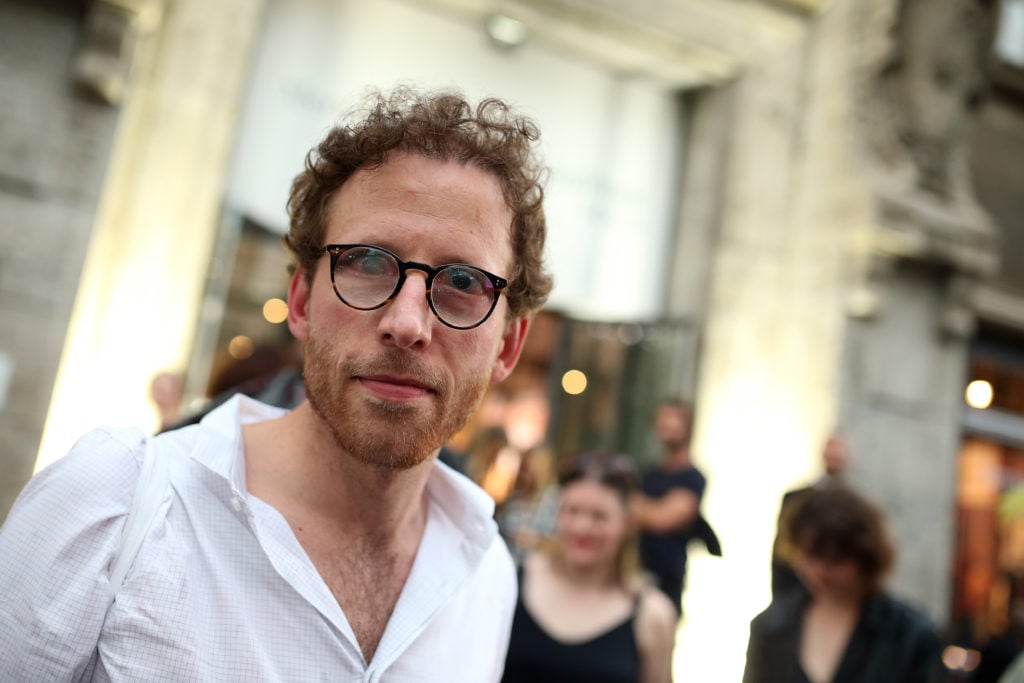Art World
Berlin Dealer Johann König Plans a New London Gallery—and Explains Why Brexit Will Help It Thrive
The German gallerist says his new UK venture will be more of an "experiment" than a gallery.

The German gallerist says his new UK venture will be more of an "experiment" than a gallery.

Caroline Elbaor

Amid a seemingly endless cycle of gallery closures, Berlin gallerist Johann König is something of an anomaly. Today, König Galerie announced plans to expand to London, making this its third space and its first outside of Germany.
The eponymous gallery—which boasts a formidable roster including the likes of Elmgreen & Dragset, Helen Marten, Erwin Wurm, and Katharina Grosse—has established itself as a key player in the Berlin scene. Since opening in 2002, it has run two spaces in the city, one located in a former industrial building on Dessauerstraße and a second in the 1960s Brutalist-style church of St. Agnes.
For his third outpost, the gallerist is continuing in the vein of industrial aesthetics and Brutalist architecture, taking over a former parking lot in the city’s swanky Marylebone area. Eschewing the typical Mayfair gallery space is key to the gallery’s vision: König describes the forthcoming extension as an “experiment” that questions what a gallery can do. More showroom than gallery, the space will serve as both a social hub and a platform for performance and artwork, according to König.
The London branch will be called König Archiv & Souvenir and will initially take the form of a series of installations and documents tracing the history of the gallery. Alongside the inaugural show, the gallery will also launch a new biannual magazine titled The German Surplus. The first edition will feature König in conversation with the artists he is showing at this year’s Frieze Art Fair in London: Anselm Reyle, Katharina Grosse, Norbert Bisky, Corinne Wasmuht, and Johannes Wohnseifer.
Post-Frieze, König Archiv & Souvenir will present a solo exhibition of work by Austrian printmaker Kiki Kogelnik, followed by a show of sculptures by Swiss artist Claudia Comte.
The new space is set to debut on October 5 to coincidence with Frieze. Ahead of the opening, artnet News spoke with the gallerist to discuss why he chose London, what he envisions for König Archiv & Souvenir, and why he sees Brexit as an opportunity rather than a disadvantage.
Why London?
I have a massive space in Berlin, which is like a Kunsthalle. We have a sculpture garden, we have two shows, educational programs—it’s really institutional. In London, I’m trying to have more of a commercial space in a very democratic way—from low-price, unlimited artist editions, up to higher-class, secondary-market material. Work coming in and out all the time. It’s almost like a viewing room format. The best way to describe it as an “experiment.”
How do you navigate opening a space in London in the wake of Brexit?
It’s exactly because of Brexit. I think it’s important to be here because galleries are closing; there is instability. When I opened my gallery in Berlin, the market was in a downturn. In London, there is also a wider market—China, Russia. It’s very international and very business-driven. It’s not a Mayfair townhouse, so for London, we don’t have that intense pressure—we can play around.
König Archiv & Souvenir is former car park which will turn into a viewing space, and we’re going to have a variety of presentations of arts, books, souvenirs, and my own smaller presentations of our artists.
Would you agree when others say that Berlin is dead?
Very much the opposite. Berlin is more alive than ever. It is growing, and become more grown-up. It’s getting a little bit more expensive here, and it’s starting to become more of a metropole.
If Berlin is so vibrant, why the expansion to London? What will be different about this space?
We’re not going to do formal “shows,” but we do want to have a presence in London. So we’ll do group shows, reading, performances, presentations, but the whole variety of the program is in the books of the artists. What is a gallery today? What can a gallery do? In Berlin, we ended up with a gigantic space but a normal gallery—who does that serve? I need to get a space that I can have game-changing exhibitions that have an impact on an artist’s career. In London, we’ll have more of a constant presentation.